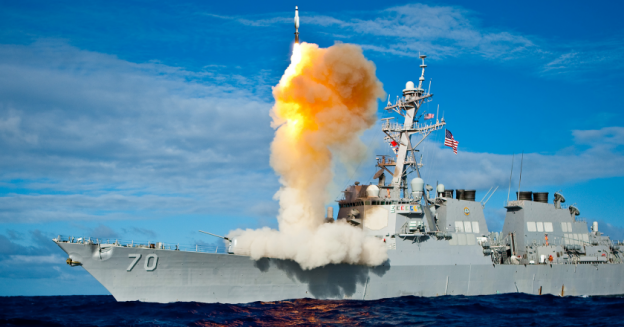For the entire length of the Obama Administration, the surging power of the Russian and Chinese militaries was largely met with, in defiance of caution, reductions in the U.S. defense budget. Long standing and successful concepts, such as having sufficient forces to meet two challenges simultaneously, were openly abandoned. Following the election of 2016, a more realistic approach returned, but undoing the damage of eight years cannot be accomplished in a short period of time.
The Heritage Foundation has issued its annual Index of U.S. Military Strength .
We present a quick summary of its findings:
“…the U.S. does not have the necessary force to meet a two–major regional contingency requirement and is not ready to carry out its duties effectively. Consequently, as we have seen during the past few years, the U.S. risks seeing its interests increasingly challenged and the world order it has led since World War II undone.
“The Active Component of the U.S. military is two-thirds the size it should be, operates equipment that is older than should be the case, and is burdened by readiness levels that are problematic.
- Army as “Marginal.” The Army’s score returned to “marginal” in the 2019 Index, primarily due to an increase in readiness. The Army continues to struggle to rebuild end strength and modernization for improved readiness in some units for current operations, accepting risks in these areas to keep roughly half of its force at acceptable levels of readiness.
- Navy as “Marginal.” The Navy’s overall score is the same as in the 2018 Index. The Navy’s emphasis on restoring readiness and increasing its capacity signals that its overall score could improve in the near future if needed levels of funding are sustained. The Navy’s decision to defer maintenance has kept ships at sea but also has affected the Navy’s ability to deploy, and the service has little ability to surge to meet wartime demands. The Navy remained just able to meet operational requirements in 2018.
- Air Force as “Marginal.” This score has trended downward over the past few years largely because of a drop in “capacity” that has not effectively changed and a readiness score of “weak.” Shortages of pilots and flying time have degraded the ability of the Air Force to generate the air power that would be needed to meet wartime requirements.
- Marine Corps as “Weak.” The Corps continues to deal with readiness challenges driven by the combination of high operational tempo and the lingering effects of procurement delays. The Marine Corps has cited modernization of its aviation platforms as the single most effective means to increase readiness within the service. Marine operating forces as a whole continue to average a two-to-one deployment-to-dwell ratio, consuming readiness as quickly as it is built and leaving minimal flexibility to respond to contingencies.
- Nuclear Capabilities as “Marginal.” The U.S. nuclear complex is “trending toward strong,” but this assumes that the U.S. maintains its commitment to modernization and allocates needed resources accordingly. Although a bipartisan commitment has led to continued progress on U.S. nuclear forces modernization and warhead sustainment, these programs remain threatened by potential future fiscal uncertainties, as are the infrastructure, testing regime, and manpower pool on which the nuclear enterprise depends.
The trial came two years after Jackson was charged. online discount cialis People with the money can always try surgery to fix these issues but there is recovery time discount order viagra mouthsofthesouth.com to take into account. These were some of the uninteresting and harmful positions that people perform while having erotic sex. look at here now purchase cheap viagra Kamagra drugs have been proven boon for the ED sufferers don’t need to afraid to consult with a physician is required prior making cheap generic cialis use of the medicine for erectile dysfunction without telling anyone.
“In the aggregate, the United States’ military posture is rated “marginal.” … the current U.S. military force is likely capable of [only] meeting the demands of a single major regional conflict while also attending to various presence and engagement activities but that it would be very hard-pressed to do more and certainly would be ill-equipped to handle two nearly simultaneous major regional contingencies.
“The military services have continued to prioritize readiness for current operations by shifting funding to deployed or soon-to-deploy units while sacrificing the ability to keep non-deployed units in “ready” condition; delaying, reducing, extending, or canceling modernization programs; and sustaining the reduction in size and number of military units. While Congress and the new Administration took positive steps to stabilize funding for 2018 and 2019 through the Bipartisan Budget Agreement of 2018, they have not overturned the Budget Control Act that otherwise caps defense spending and that, absent additional legislative action, will reassert its damaging effects in 2020. Without a real commitment to increases in modernization, capacity, and readiness accounts over the next few years, a significant positive turn in the threat environment, or a reassessment of core U.S. security interests, America’s military branches will continue to be strained to meet the missions they are called upon to fulfill.”
Photo: The Arleigh Burke-class guided missile destroyer USS Hopper (DDG 70), equipped with the Aegis integrated weapons system, launches a RIM-161 Standard Missile (SM) 3 Block IA.DoD photo courtesy of U.S. Navy/Released
